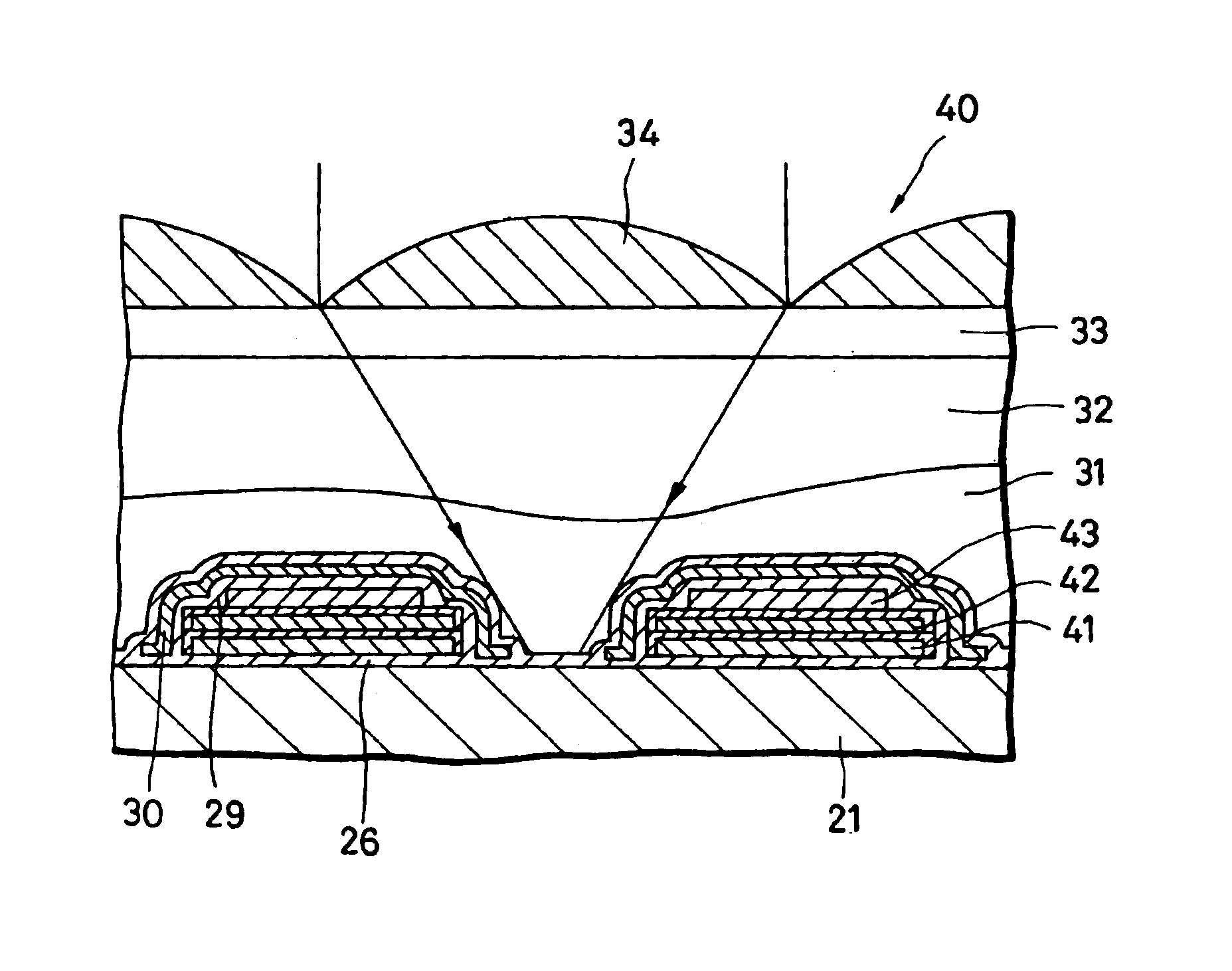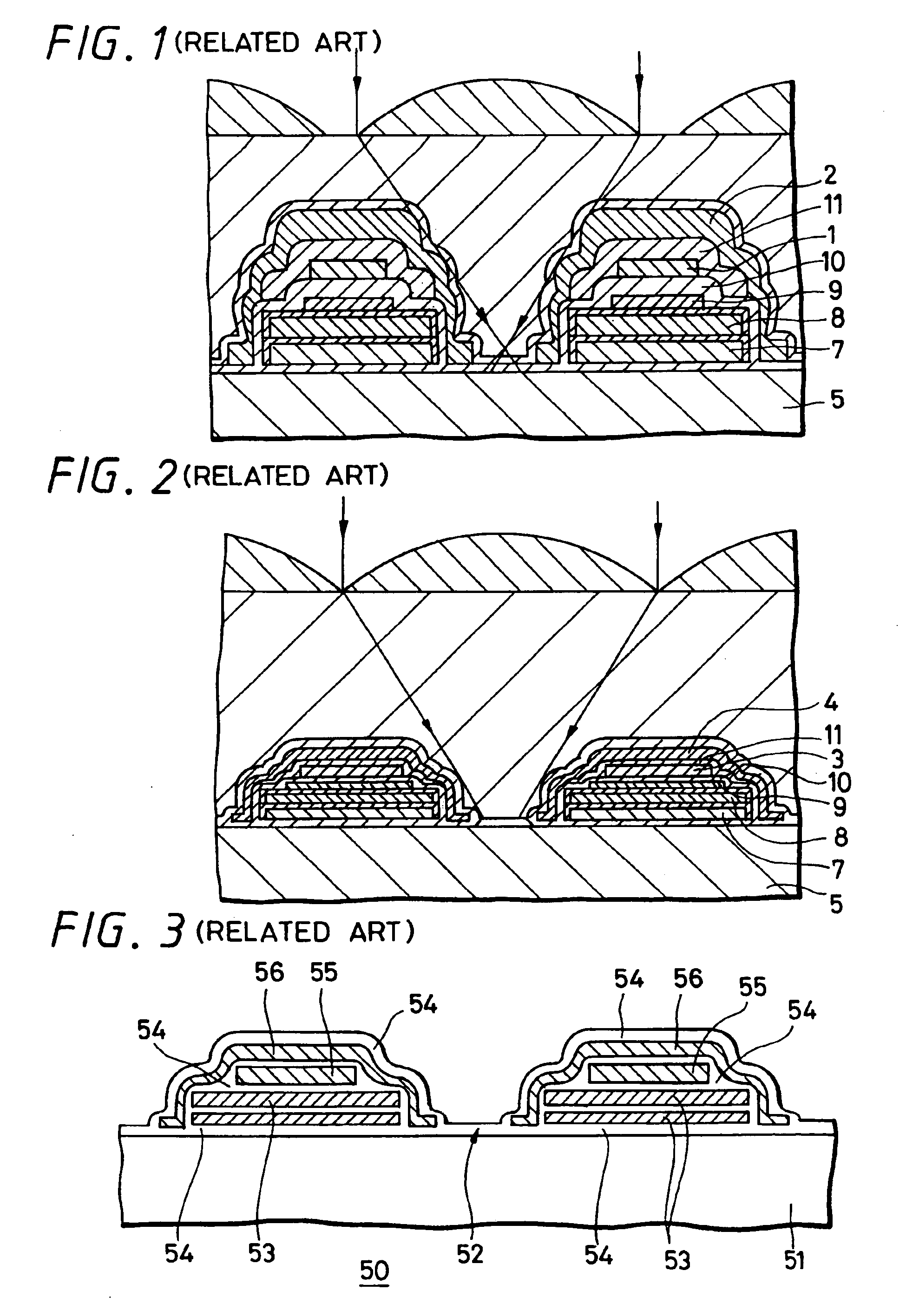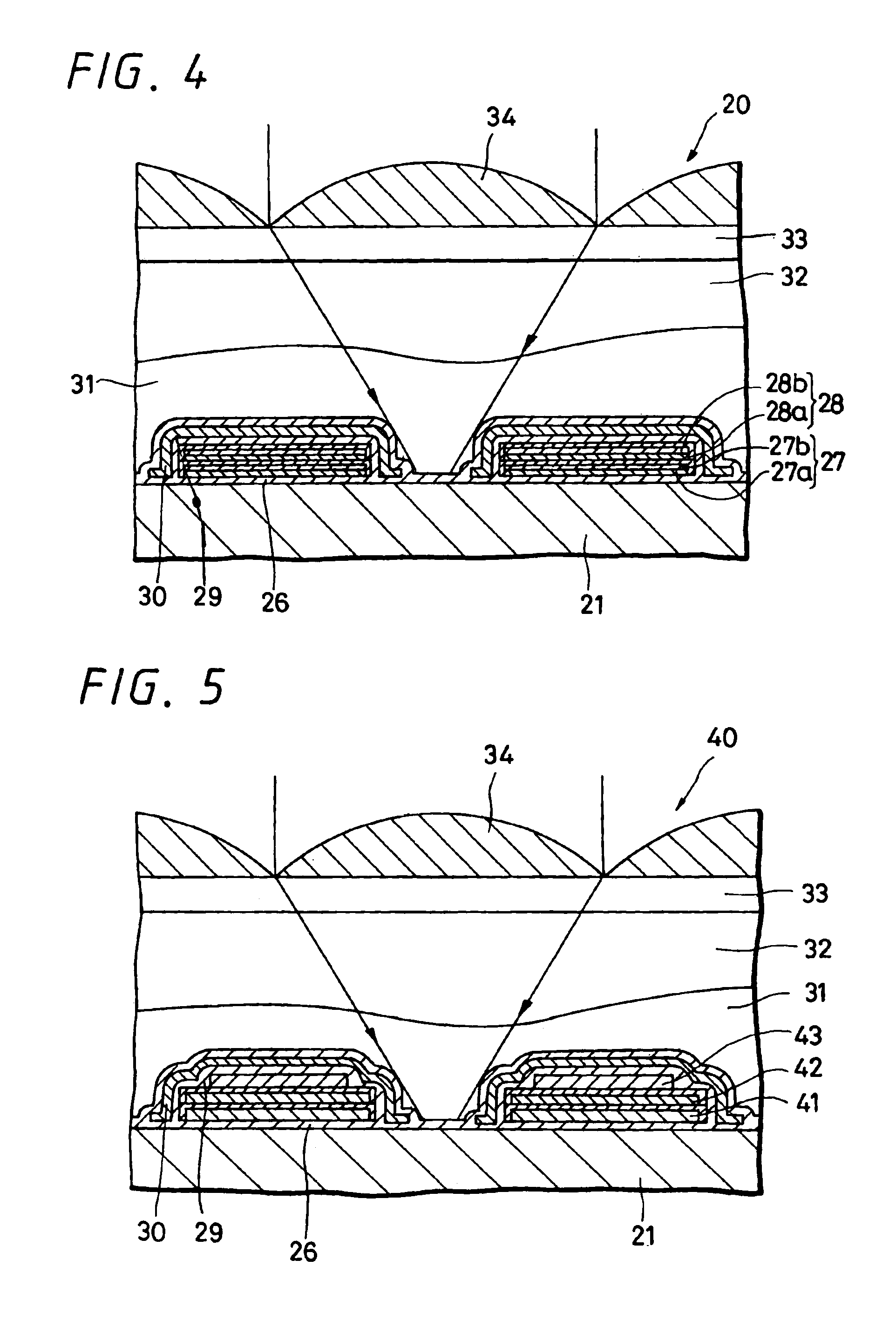Solid-state imaging device and manufacturing method thereof
a solid-state imaging and manufacturing method technology, applied in the direction of color television, radio control devices, television systems, etc., can solve the problems of difficult to increase the effective area of the photosensor section of the solid-state imaging device, difficult to operate at a high speed, and the effect of preventing the increase of shading of sensitivity
- Summary
- Abstract
- Description
- Claims
- Application Information
AI Technical Summary
Benefits of technology
Problems solved by technology
Method used
Image
Examples
first embodiment
FIG. 4 is a fragmentary cross-sectional side view illustrating a solid-state imaging device according to the present invention. In FIG. 4, reference numeral 20 denotes a solid-state imaging device, and reference numeral 21 denotes a silicon substrate (base). As shown in FIG. 4, the silicon substrate 21 has on its surface layer portion formed a light-receiving sensor portion (not shown) for performing a photoelectric conversion. A charge transfer section (not shown) is formed on one side of this light-receiving sensor section through a read gate (not shown). Another charge transfer section (not shown) is formed on the other side of the light-receiving sensor section through a channel-stop region (not shown). According to the above-mentioned arrangement, a signal charge photo-electrically-converted by the light-receiving sensor section is read out to the charge transfer section through the read gate and transferred by the charge transfer section.
The silicon substrate 21 has on its sur...
second embodiment
FIG. 5 is a fragmentary cross-sectional side view illustrating a solid-state imaging device according to the present invention. In FIG. 5, reference numeral 40 generally denotes a solid-state imaging device. The solid-state imaging device 40 shown in FIG. 5 differs from the solid-state imaging device 20 shown in FIG. 4 in that first and second transfer electrodes 41, 42 and interconnections (not shown) connected to the first and second transfer electrodes 41, 42 are all made of only polysilicon and that a shunt interconnection 43 is formed on the first and second transfer electrodes 41, 42 and the interconnections 1s connected to the first and second transfer electrodes 41, 42.
The shunt interconnection 43 is formed in parallel to the first and second transfer electrodes 41, 42 and is made of a high-melting point metal such as tungsten (W) or a high-melting point metal silicide such as WSix(tungsten silicide) or the like. This shunt interconnection 43 is formed on a SiO2 electrode in...
third embodiment
A solid-state imaging device according to the present invention will now be described with reference to FIGS. 6 to 9.
FIGS. 6 to 9 are schematic diagrams showing a solid-state imaging device according to the third embodiment of the present invention. In the third embodiment shown in FIGS. 6 to 9, the present invention is applied to a frame interline type CCD solid-state imaging device.
As illustrated, a CCD solid-state imaging device 10 is driven by a four-phase clock signal, and a polycrystalline silicon layer of two layers functions as a transfer electrode. Specifically, a first-phase clock signal Oa or a third-phase clock signal φc is applied to a polycrystalline silicon layer of the first layer. A second-phase clock signal φb or a fourth-phase clock signal φd is C applied to the polycrystalline silicon layer of the second layer through a shunt interconnection layer and a buffer layer.
Initially, a layout of this frame interline CCD solid-state imaging device will be described with ...
PUM
 Login to View More
Login to View More Abstract
Description
Claims
Application Information
 Login to View More
Login to View More - R&D
- Intellectual Property
- Life Sciences
- Materials
- Tech Scout
- Unparalleled Data Quality
- Higher Quality Content
- 60% Fewer Hallucinations
Browse by: Latest US Patents, China's latest patents, Technical Efficacy Thesaurus, Application Domain, Technology Topic, Popular Technical Reports.
© 2025 PatSnap. All rights reserved.Legal|Privacy policy|Modern Slavery Act Transparency Statement|Sitemap|About US| Contact US: help@patsnap.com



